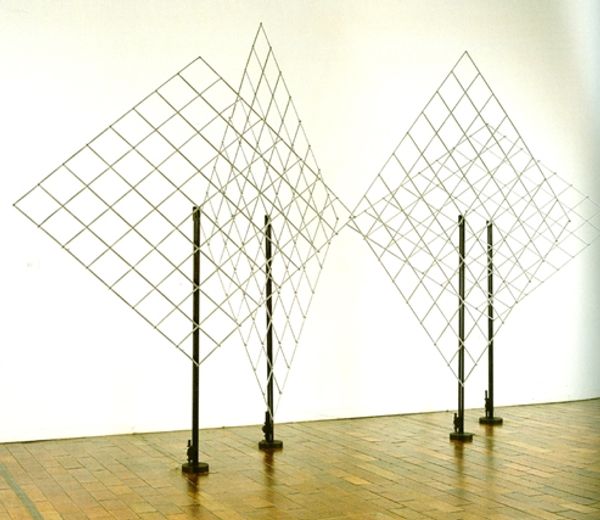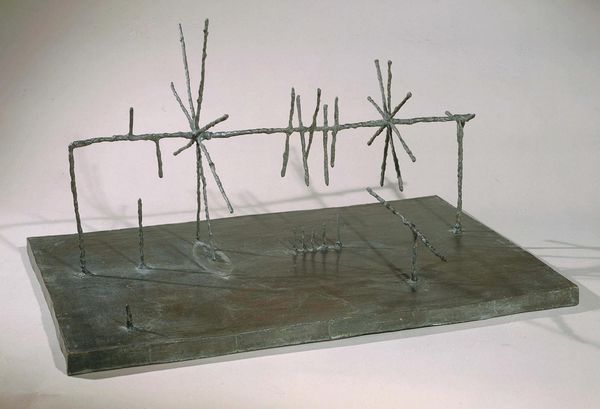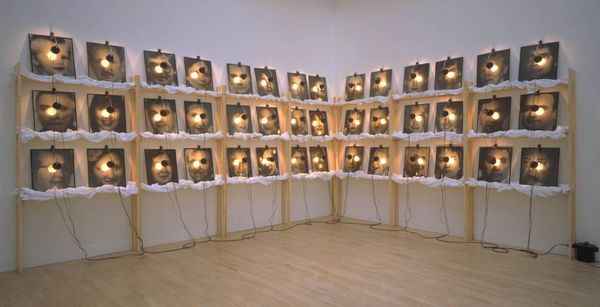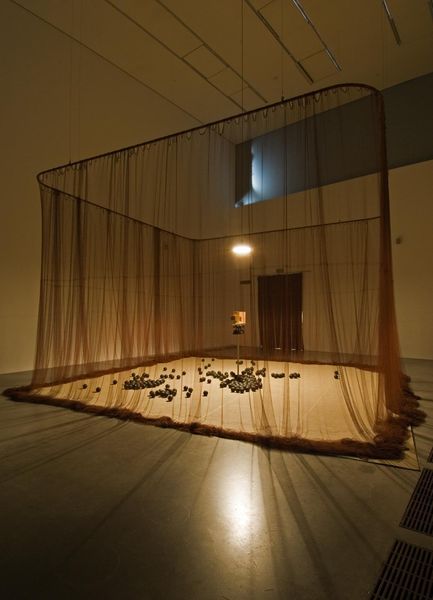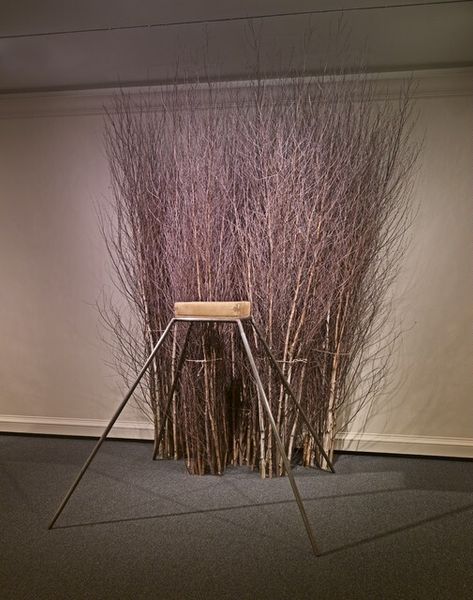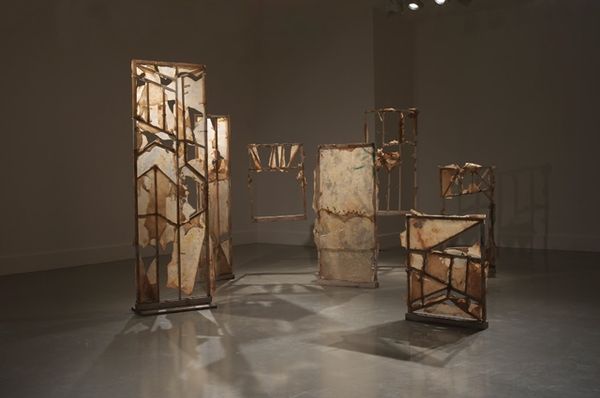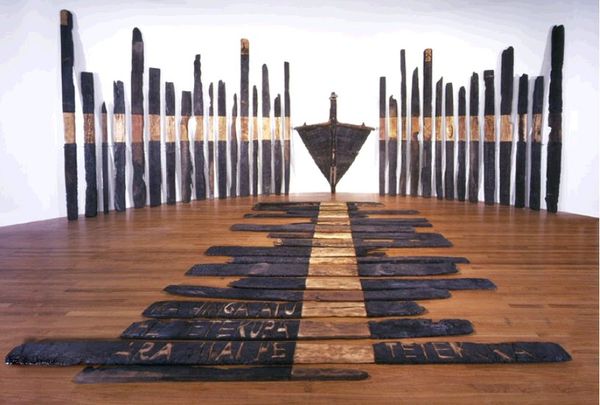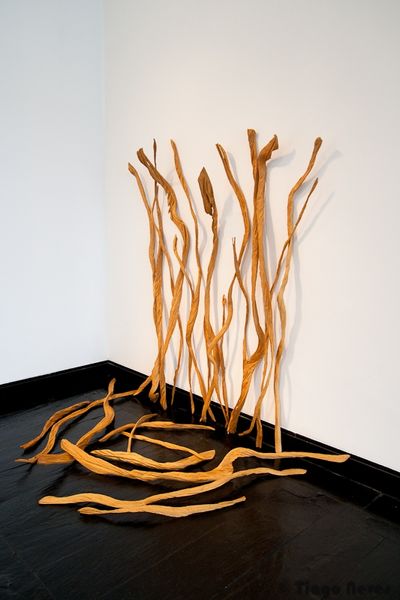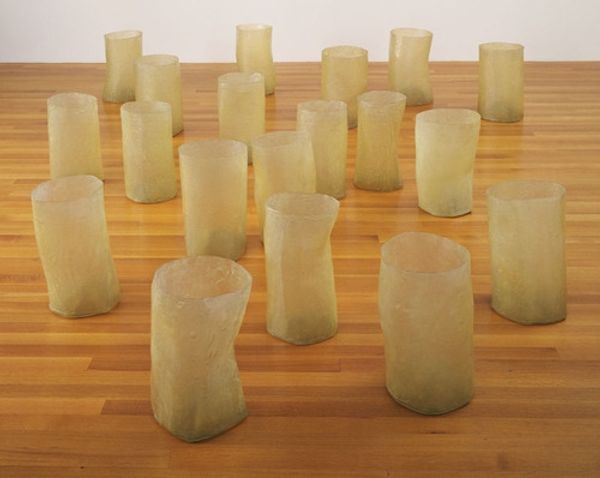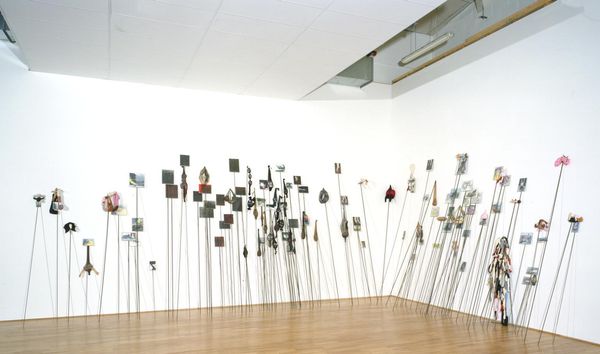
collage, found-object, ephemeral-art, installation-art
#
abstract shape
#
collage
#
simple abstract line
#
conceptual-art
#
incomplete sketchy
#
minimal geometric
#
found-object
#
ephemeral-art
#
abstract form
#
white focal point
#
installation-art
#
architecture model
#
abstract composition
#
minimal composition
#
geometric form
Copyright: Robert Filliou,Fair Use
Editor: We're looking at "Musique Télépathique n° 5" by Robert Filliou, created in 1978. It appears to be an installation of sorts, incorporating found objects like playing cards and what seem to be tripods. There's an element of playful randomness to it, almost like a game frozen in time. What do you make of this unconventional arrangement? Curator: It's tempting to read this as an exercise in institutional critique. Filliou was deeply engaged with the Fluxus movement, a radical artistic current challenging the very definition of art and authorship. His embrace of "found objects," particularly mundane items like playing cards, underscores a conscious rejection of traditional artistic materials and hierarchies. Considering the title – Telepathic Music – could the tripods represent radio antennae picking up invisible transmissions? Editor: That’s an interesting reading, to think about challenging what's art, and telepathic music… I never would have thought of that. But how does that translate into a broader social critique? Curator: Think about the time period – the late 1970s. There was widespread distrust of institutions, disillusionment with political systems, and a growing desire for alternative forms of communication. Filliou is perhaps questioning the authority of established cultural institutions. Maybe he's prompting viewers to question what "counts" as art, as music, as valuable knowledge itself, or even the political motivations embedded in something as simple as a deck of cards. The randomness could be a statement against the systems society has created, perhaps the traditional structure itself. Do you see that perhaps there is no intrinsic value here but assigned significance by way of placement. Editor: I can see that, each of those pieces has very common usage, but Filliou transformed that commonality with a certain randomness of arrangements, perhaps representing challenging systemic organizations. I learned quite a bit from that! Curator: Indeed. It invites a deeper reflection on the systems of value and meaning we often take for granted and encourages the viewer to participate in creating it.
Comments
No comments
Be the first to comment and join the conversation on the ultimate creative platform.
